Hamas aims to make us not want to live in Israel. ‘Victory’ is when that threat is defeated
Battling in Gaza, the IDF is beginning the long process of restoring public faith in its ability to protect us from savage, amoral enemies; not so our political leaders.

(THE TIMES OF ISRAEL) Almost two months after Hamas’s unbearable slaughter of 1,200 people in southern Israel and its mass abduction of 240 more, with the IDF’s ground offensive now resumed and expanding to southern Gaza, it is not remotely clear what success Israel has achieved in its declared goal of dismantling Hamas. Indeed, it remains unclear what “dismantling Hamas” entails and how practicable it is.
In the defense establishment, the talk is of rendering Hamas’s 24 battalions inoperative, and the assessment is that most of those in northern Gaza are indeed no longer functional and that some 5,000 Hamas gunmen have been killed in the Gaza Strip (in addition to 1,000 on Israeli territory on October 7).
There is an emphasis on destroying Hamas’s weapons systems and stores and its control and command centers. There is a concerted effort to destroy as much as possible of its vast tunnel network. And there is a focus on finding and eliminating Hamas’s key commanders, and especially the leadership quartet of Yahya Sinwar, his brother Mohammad, Marwan Issa and Mohammed Deif.
The IDF seems to have resumed its ground offensive without major setbacks. But the scenes that attended some of last week’s hostage releases, with defiant shows of force by Hamas and Islamic Jihad terrorists at elaborate, nauseating handover ceremonies, including in central Gaza City areas where the IDF had been previously deployed, raise questions about how badly Hamas has been set back even in parts of northern Gaza.
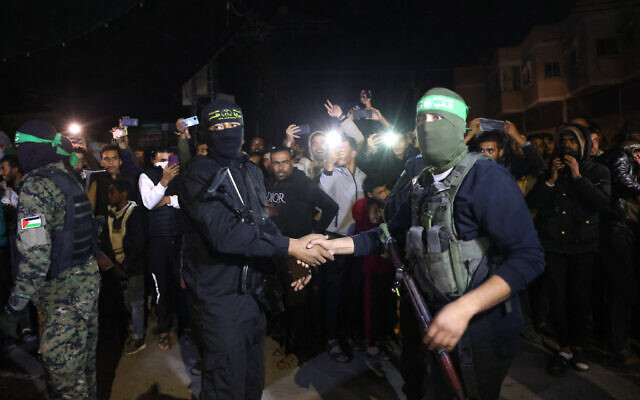
Is the IDF proceeding unstoppably toward the conquest of all major Hamas strongholds, including Khan Younis in the south, where much of the Hamas leadership and many of the hostages are thought by some in the defense establishment to be located?
Or is it fleetingly establishing a hold on these areas while Hamas’s gunmen have melted away, ready to emerge when the IDF reduces its presence or withdraws?
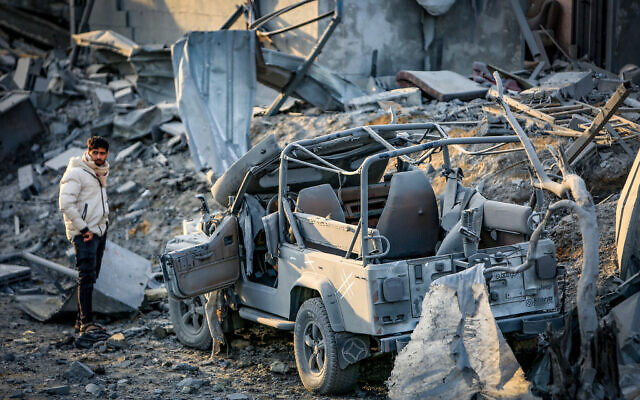
Israeli officials, speaking privately, acknowledge that the IDF amended its plans for the ground offensive in southern Gaza in light of considerable private and public American criticism of the way it fought in the northern part of the Strip.
At a highly significant press conference in Tel Aviv on Thursday, visiting US Secretary of State Antony Blinken upbraided Israel for the “massive loss” of civilian life in the ground offensive so far. And he publicly told Israel there could be no repeat in the south — no remotely comparable civilian fatalities; no targeting of hospitals, schools, UN facilities, or civilian infrastructure; no evacuations of civilians on a comparable scale to that which took place in the north, and more safe areas for evacuated civilians to flee to.
Blinken asserted that Israel’s “sophisticated” IDF could achieve its goal of defanging Hamas even within those limitations, and even while acknowledging that Hamas operates from hospitals, schools, and civilian facilities and uses Gaza’s civilians as human shields.
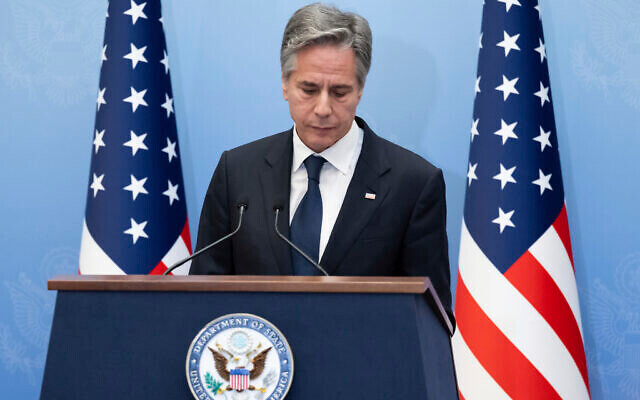
Senior Israeli military officers have said that the IDF’s tactics in northern Gaza involved encouraging noncombatants for weeks to evacuate, and then bombarding targeted areas heavily from the air, before ground forces moved building by building. This caused considerable loss of life and left immense devastation, they acknowledge, but almost every building was booby-trapped and contained shafts leading to underground tunnels from which Hamas gunmen were emerging or poised to emerge.
In areas, such as the Shati refugee camp, where civilians widely evacuated, the loss of life was reduced. Not so in areas such as Jabalia, a Hamas stronghold where many Gazans either chose or were forced by Hamas to remain.
The IDF had been considering more surgical use of ground forces in parts of southern Gaza, but also believes utilizing the northern Gaza approach when tackling Hamas strongholds in the south could be crucial in avoiding large-scale IDF casualties.
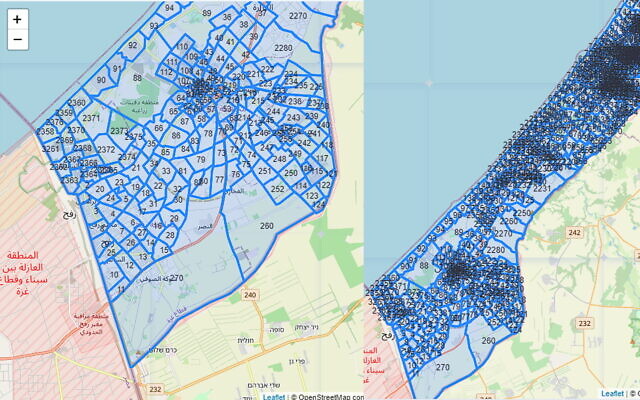
Since Blinken’s visit, the IDF published a map intended to help noncombatants in Gaza understand where the war will be focused and evacuate in time.
It is not known how significantly the IDF is changing its battle tactics to meet the concerns expressed not only by Blinken but also by US President Joe Biden and how such a change might affect the loss of life among Gazans and among IDF troops.
Also unknown is precisely how Israel intends to reconcile the two conflicting war timetables, as seen by the IDF and the Biden administration. Defense Minister Yoav Gallant reportedly told Blinken at the war cabinet meeting on Thursday that Israeli society is united behind the goal of dismantling Hamas, “even if it takes months.” To which Blinken reportedly responded: “I don’t think you have the credit for that.”

In fact, the defense establishment expects to be fighting in Gaza for many months — as in, throughout 2024. Presumably, this will not be fighting at the same intensity as in the past weeks and the next two months. Nonetheless, there are differences here between Israel and its key US ally, and a lack of clarity, that will likely resurface and cause friction.
**
Already, there is open friction between Prime Minister Benjamin Netanyahu and the US over the fate of post-war Gaza.
The Biden administration wants a “revitalized” Palestinian Authority ultimately governing the Strip as part of a two-state solution.
Netanyahu, in an extended critique toward the end of his press conference on Saturday night, declared bitterly of the PA that “I’m not prepared to delude myself and say that this defective thing, established under the Oslo Accords in a terrible mistake,” should be allowed to govern Gaza. The PA, he charged, “doesn’t fight terror, it finances terror; it doesn’t educate for peace, it educates for the disappearance of the State of Israel. That is not the group that should enter now.” And yet, he protested, “that’s what even the best of our friends suggest. I think differently. I oppose it. I think we need to build something else.”
While the US has been urging Israel to at least tell it what that “something else” might be, some in the defense establishment want to minimize the talk of “the day after” altogether because they think it damages the imperative to win right now. It gives Hamas the sense that it only needs to hang on a little longer, until the dawn of that “day after,” they argue. And the debate in Israel over a post-war Gaza also revives political division — about the PA, two states and the whole long-term question of Israel’s relationship with the Palestinians.
But whatever the post-war formula may be, Israeli defense sources stress that it requires a much-elevated relationship with Egypt, whose role will be critical in preventing terror groups in Gaza from simply rebuilding their strength as the IDF pulls back. Either the IDF would have to remain deployed in the long term along the Egypt-Gaza border — in the vulnerable Philadelphi Corridor from the sea to the Kerem Shalom crossing — or Egypt would have to assert genuinely effective control over what crosses that border. Hitherto, Hamas has been able to bring in what it needed to manufacture rockets and other weapons — with horrific consequences on October 7.
**
The ultimate aim of Hamas’s October 7 onslaught was to make us not want to live in Israel. Needless to say, that remains the terror group’s goal.
Hamas’s Gaza head Yahya Sinwar and the orchestrators of that unprecedented, barbaric assault aimed to kill as many of us as possible, and abduct as many of us as possible. And they calculated that their horrific massacres, the psychological warfare they would wage over the fate of the hostages, and their exposure of our political and military leaderships’ incompetence would engender so deep a sense of hopelessness and vulnerability in the rest of us as to destroy Israel from within.
Over the past two months, the IDF — the people’s army — has begun the long process of restoring the people’s faith in its essential capacity to protect them. It did so first, however terribly belatedly, by stabilizing the situation in southern Israel and then by waging war against Hamas in Gaza. I stress “begun” and “long process.”
The political leadership has done no such thing.
Netanyahu still refuses to take the elementary step of saying, “Of course, as prime minister, I bear prime responsibility for the catastrophe of October 7.” To his credit, he has begun to interact with Israeli media and, by extension, with the public, taking questions at press conferences and meeting with at least some of those most directly affected by October 7.
But his appearances are patently geared toward bolstering his own political fortunes — with an endless emphasis on what he is ostensibly uniquely capable of doing in overseeing the diplomatic and military response to the Hamas onslaught, even as he publicly picks fights with the US over post-war Gaza and fails to cultivate the vital relationships Israel needs now with the moderate Arab world, and especially Egypt.
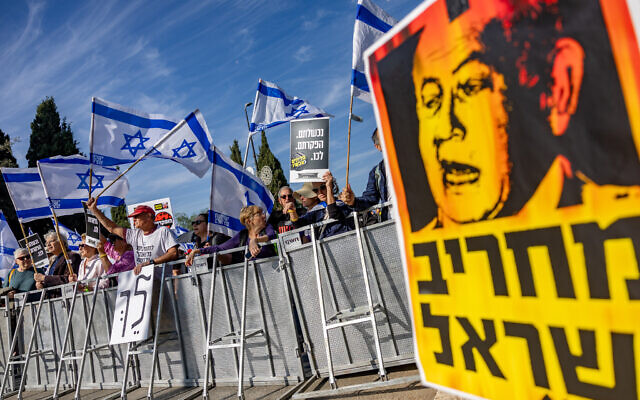
His refusal to immediately accede to the hostage families’ request for a meeting with the entire war cabinet, after the truce was breached by Hamas and the hostage releases ended, was only the latest example of his inability to recognize what should have been a top priority.
Netanyahu’s heartless “such is life” indifference on Saturday night to the wider set of circumstances surrounding the terrible killing on Thursday of the heroic civilian, Yuval Castleman, who was shot dead by a reservist after thwarting an ongoing deadly terror attack, also seemed to indicate a worrying unfamiliarity with even the basic facts of what had happened two days earlier.

And the incapacity of Netanyahu and Defense Minister Gallant to so much as hold a joint press conference when they were both together in the Tel Aviv Kirya complex — with Gallant appearing just a few minutes earlier than Netanyahu on Saturday night — showcased disunity at the very top of the war cabinet, something again that should be unthinkable in the midst of war.
**
The infighting in Sunday’s Likud faction meeting was pathetic and dangerous.
Knesset members from Israel’s ruling party venting their spleen at political opponents, and even at the IDF Spokesman, at a time of war, ought to have been unthinkable.
Doing so when so many government ministries, including Likud-run ministries, are persistently dysfunctional shows the party’s legislators to be failing the electorate that placed its faith in them at the ballot box.
**
Two months into the war, with tens of thousands of Israelis still displaced from their homes in north and south, it is inexcusable that the government has still not taken basic steps to allow them to restart some semblance of normal life.
It will be weeks — by the most optimistic government estimates — before anybody will be able to return to areas close to the Gaza Strip. And it may be months before people can return to northern border areas, since the defense establishment insists that the war will not end without a reduction in the threat posed by Hezbollah.
(It is now an open secret that Gallant wanted to attack Hezbollah before tackling Hamas — following the military doctrine that if you’re going to fight on two fronts, deal first with the more potent enemy — and was overruled.)

Surely, what is most urgent — and doable — is for the government to pay for evacuated Israelis to leave hotels and move to short-term rentals in non-border areas, and for the Education Ministry to arrange schooling for them, with expanded school services in the areas to which they temporarily relocate.
**
The weeklong truce was breached by Hamas with 105 hostages released and some 137 — 126 of them Israelis — still held in Gaza. (Israel believes at least 15 of the 137 are dead.)
It collapsed because Hamas refused to honor the terms of the deal, which prioritized the release of non-soldier women and children, even though it continues to hold 15 women who fit that category and two children (Ariel Bibas, 4, and Kfir Bibas, 10 months).
Israel’s leadership decided that the breach of a deal underwritten by Qatar, Egypt and the US could not be tolerated, among other reasons because no future deal would be worth the paper it was written on.
Israel has also stressed that the now-resumed ground offensive will continue even if negotiations on further releases make significant progress.

Broadly, the Israeli leadership’s argument is that Hamas only responds to force, that the 105 releases secured thus far were solely a consequence of the IDF’s military pressure. And that ongoing military pressure is the best way to bring more hostages back home — either via negotiation or through direct IDF action.
Military officials assert that the ground offensive in the south will likely not endanger hostages, since Hamas regards its captives as assets — even though the terrorist group has issued and doubtless will continue to issue claims of hostages killed by IDF bombardment.
Former prime minister Ehud Barak argued on Saturday that Israel should have announced from the start of the war that it was ready for an “all for all” deal, under which it would be prepared to release all Palestinian security prisoners in return for the freeing of all hostages held in Gaza. This may not have produced a deal at that time, but it would have given Israel greater international legitimacy, he asserted.
Most crucially, Barak noted, the hostages today are in an entirely different category than any in previous deals. “These are people who were abandoned by the State of Israel” when the Hamas terrorists were able to rampage murderously through their communities on October 7, and now Israel has “to decide whether it is also going to sacrifice them.”
“We are severing the moral basis of the foundational contract” between the state and its citizens, he warned, “if we don’t do everything in order to get them out, even if that means there will be lots of terrorists released from jail. We’ll settle accounts with [the terrorists] later on, though that may take a long time. Saving the hostages will not be possible if we don’t do it during this war.”
The government, of course, argues that it is indeed doing “everything in order to get them out.”

But it undermines that claim, and weakens the hostage families’ faith in the national leadership, when it fails to immediately heed every request from the families for access and information.
Speaking at a press conference on Monday afternoon, Yael Adar, mother of hostage Tamir Adar, called it “humiliating” that the families’ request for a meeting with the war cabinet, which they issued after the truce collapsed, had not yet been granted. Belatedly receptive, Netanyahu’s office said it had already been set for Wednesday but might now be moved forward.

comments